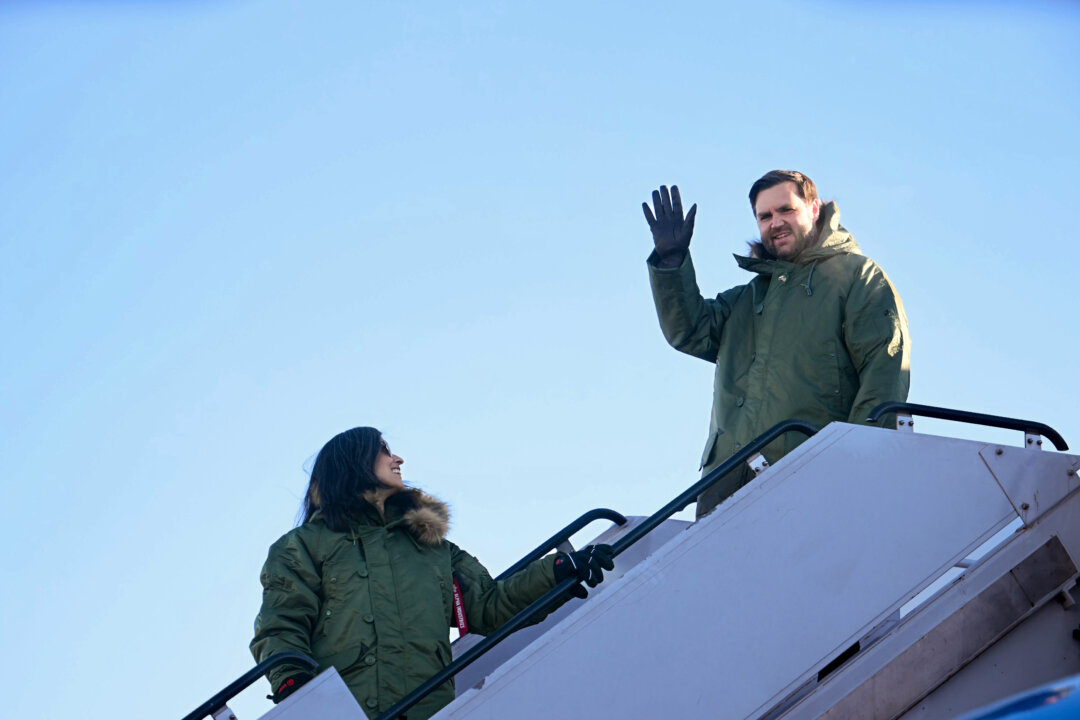En nous offrant son précieux éclairage sur l’un de ces organismes de recherche restés jusqu’ici méconnus, M. Trente a rendu à la communauté savante un service insigne, mettant en lumière une institution digne—rien de moins—d’un Bloch ou d’un Ginzburg. Car loin du regard profane, mus par la seule reconnaissance espérée de la postérité, des érudits œuvrent sans relâche en leurs citadelles du savoir. Ainsi, la Labyrinth Sodality, l’Iberian Sundial Society, le Rekord-Club Gründerzeit, le futur Museum of Tri-Jurassic Technology, le Pith Rivers Museum, et surtout l’Anti-Gravity Research Foundation ont-ils tous, en leur temps, reçu les honneurs qui leur revenaient. Justice est aujourd’hui rendue à un autre de ces hauts lieux.
Fin.
M. Trente has furnished a signal service to the scholarly world with his éclairage of one of our unsung research bodies, worthy of Block or Ginsberg. Far from the common eye, for the thanks of posterity, scholars labor in citadels of knowledge—the Labyrinth Sodality & Iberian Sundial Society, the Rekord-Club Gründerzeit, the forthcoming Museum of Tri-Jurassic Technology, the Pith Rivers Museum, & especially the Anti-Gravity Research Foundation, have all at some point received their due; and now another has come due.
One fears it will grace more catalogues than shelves, reviewed more than read, yet any reader of even modest cultivation will at once perceive that Trente’s inquiry eclipses those earlier curiosities in both scope and intellectual élan, and would prove an inestimable ornament to any library. For Trente’s Chestertonian thesis is a micro-historical vindication of the English verity that no things are uninteresting—only people.
…M. Trente conducts us to a quaint quarter of New Orleans, down a dilapidated lane—past a sleeping rusty-black cat1—where, from time to time, a meek figure or a mail-carrier may approach the disquietingly overgrown official entrance. The lost may consult the stately period engraved on the plaque—the one with a bird & wildcat—to learn that it is the door into summer:
The Institute of September the Thirtieth
(Founded 1969)
Lux in Tenebris Diei Unius
Dedicated exclusively to the exhaustive study and preservation
of all phenomena, documents, and recollections pertaining to
September 30, 1939.
(all translations mine)
The Institute is one of the least known legacies of Vincent Rosier (1927–1988), for whom Trente diligently provides an enlightening parcours de vie: Birth in rural Ireland, emigration to the City of Wind, Chicago, hardscrabble childhood running with youth gangs, the precocious admission to an anthropology major followed by a contretemps while kayaking Papua New Guinea, on behalf of the OSS, which connections proved useful in post-war import-export ventures (making, and losing, his first fortune when his curious ‘Rosier Cube’ oranges were popular, and then unpopular, in the West). He was even trusted with back-channel Soviet negotiations over the (still-classified) Mukbang Incident, followed by restless expansion into unrelated ventures including his publishing & chemical supply conglomerate (best known for its deodorant), shrimp fishing (vertically integrated restaurant chain), legendary commodities trades (famously breaking the Newcastle union through locally-delivered coal futures), and an ill-fated Texas ostrich farm investment (now a minor tourist attraction). Eventually he withdrew into Californian venture capital, a seersucker-clad gray eminence among Silicon Valley upstarts, where he amassed the Greco-Roman art collection he is chiefly remembered for.
…Trente frames no explanations for the existence of the Institute (rather than its operation), but he explains the occult title thus: during the old lion’s final inspection of the Institute, our author marshaled the courage to ask, “Why the Thirtieth? Why not, say, the day after?”—only for him to roar back: “October the First is too late!”
This recalls those early 20th-century titans who dreamt of universal photographic catalogues, of vast “Palais Mondiaux” in Geneva meant to house the entirety of human inscription, but in Rosier, those ambitions are involuted to a breathtaking degree. For the Institute tasks itself with gathering the disjecta membra of September the Thirtieth and shoring them against ruin, a repairing of the world guided by hermeneutics almost Blakean—“To see a world in a grain of sand / And a heaven in a wild flower, / Hold infinity in the palm of your hand / And eternity in an hour.”
However paradoxical its foundational premise might appear to the uninitiated, the sheer encyclopedic ambition of the Institute’s collections testifies to an endeavor wherein (per the playwright), nihil humanum is deemed alien; the Institute attempts a radical re-centering of the human condition upon this ’pataphysical temporal locus, an eternal September. Everything is coming to be, or has become, through the 30th of September, 1939. There is no camel which, followed for long enough through the desert of the real, with honesty and integrity, does not go through the eye of that needle.
Its agents diligently peruse library catalogues for items to Xerox™, and rare book dealers sedulously send circulars of items appearing at auction to feed its esurience for every book published that week, or which might have been on sale. The Institute has the largest newspaper collection in the world—not in depth, but in breadth, as they aim to collect every newspaper that day (and before, and after), in both morning and evening edition. As its endowment is generous, but not as unlimited as its task (for ars longa, dies brevisque), the Institute often preserves only the most relevant issues, while the rest may be dispersed or destroyed; and so there is a steady stream of visitors who are there to examine, as the case may be, the sole known surviving issue of a South American newspaper (on gauchos), or searching later issues in the hopes of pirated articles or rebuttals. Likewise, the sum of the meteorological and stellar records kept at the Institute (off-site) can only be described as astronomical, and every so often, an astronomer from Cambridge or Mount Wilson may inquire after a plate. Increasingly, scientific time-series are calibrated against the Institute’s comprehensive cross-section, as a temporal prime meridian.
…In its early days, the Institute prioritized ephemera: diaries, real or dream (often a single page from anonymous donors), receipts, hotel registers, passenger manifests, restaurant and dining-car menus, playing cards, collectibles like Dixie cups, amateur recordings of radio stations, or any photo an archivist could argue might have been taken on the 30th. (…The “Rosier Apple”, bred in Michigan and introduced commercially with a trademark granted on September 30th, is now known exclusively from an archival watercolor sketch.)
This reviewer notes approvingly the Institute’s prescient initial focus on juvenilia—children’s marbled papers, bubble gum wrappers (focused baseball cards), and schematics for homemade go-karts from the Chicagoland area—which could never have been effectively researched later, and represents one of the few meaningful sociology archives of childhood (a field which, beyond charming anecdotes, still awaits its Bachelard or Bourdieu).
These often have unexpected uses.
Gourmands consult the menus to understand the evolution of fine cuisine, like where certain sourdough breads came from. The grocery store receipts, seemingly so picayune, have proven priceless to nutritional historians; the U.S. National Institutes of Health have digitized the collection to understand public nutrition on the eve of war and the health effects of rationing.
And linguists discovered a previously unknown temporal dual to hapax legomenon, termed hapax ephemeron: words used by multiple people but zeitgebunden to a single day, which are invisible to less comprehensive archives, and which seem to function as a unique langue of that day (eg. “autumnese” or “umbrellous”, “Blitzfrieden”, “droop-tail”, “farewellfare”, “khaki-gaze”, “spell-gaping”, “Thirtio”). The past is a foreign country which poses its own translation challenges to would-be exegetes, which are still being thrashed out in the annual Ephemerata linguist symposia.
Parallel analyses indicate that other domains experience hapax ephemeron, of advertisements put up only to be pasted over the next morning, daily-special dishes never seen again; each day may be regarded as a man who is born with the dawn, matures in the afternoon, retires in the evening, and dies with the sunset. (That other melancholy Dane was indeed correct, that the 30th had to be lived forward, though it is understood only backward; and this understanding—like the owl of Athena or a review—is doomed to arrive too late.)
With a veritable paradise of archives in one building, visiting novelists & historians will often reconstruct “a day in the life” of a major figure and find out if the President had fake turtle soup at the White House before taking in a contemporary movie like Dark Victory, and if he took a train with an exact itinerary, then the list of known passengers he might have talked to, and what he would have seen along the way like advertisements, local newspapers and weather. (A curse of reading this is that readers will start noticing “late September 1939” everywhere.)
One can sit in the media room, and play what the archivists call the “alephabetical tracks”: a 24-hour long track splicing together random seconds from every unique audio source with a known broadcast time for various geographical divisions like “Chicago” or “Continental USA”—this is a useful corrective to histories which suffer the mass tyranny of greatest hits like Glenn Miller’s “Somewhere Over the Rainbow”, and necessarily ignore all the local one-off broadcasts, like the many chorus groups. These archives have been mined for art projects such as Martin Claychrist’s haunting day-long film, The Thirtieth Looks Back: the artist isolated tens of thousands of faces from photos and footage, and then the film continually superimposes faces as a collage—each new face covering up the previous ones.
Not all efforts prove suited for academic study. One post-graduate visitor attempted an ambitious project to synthesize the dominant ambient smells of various global locations: vials of synthesized Parisian café exhaust, rural Irish peat smoke, and the metallic tang of Chicagoan industrial zones, based on chemical analyses of soil samples and contemporary descriptions in literature; while some visitors found it useful, there were persistent questions about whether the 30th really smelled that bad, and what the value to the Institute was. And the charming, if scientifically dubious, effort to catalogue the collective unconsciousness of humanity foundered when the initial statistical dream diary results, showing anomalous ‘ψ’ predictions of October 1st, disappeared in followup data collection, and unspecified related projects were shelved due to “administrative irregularities”.
Of late, Trente informs us, they have begun experimenting with the newest audio-visual technology on Apple Macintoshes to record ‘living histories’, recruiting ‘citizen-researchers’ to interview anyone over the age of 50. These may be of particular value in the future with the development of the “Inter-Net” (an Americanized Minitel), or perhaps another fad.
The Institute, it must be said, grapples with the inherent problématique of matching its conceptual focus (or Anglo-Saxon absence thereof) to its resources, and avoiding professional deformation.
The first challenge appeared early on, in its “Warring States” period: to what extent should the Institute seek to ingest all legal and government documents, which are generated in such timestamped volume? The Legalists argued for a strict one-size-fits-all policy of taking anything dated the 30th, to create La Bibliothèque totale [Total Bookcase] (“If every record is preserved, there will be neither errors nor doubts.”); if other research on “decorative disciplines” had to be defunded, so be it. The Antinomians emphasized the sheer archival volume of such a simplistic policy would inevitably lead to the downfall of the Institute, either in the rebellion of researchers, or in its budget shortfalls. The resolution, it is not without a certain irony, came when the Legalists’ warehouse expansion could be funded only by an act-of-faith of researchers, including the fiercest Legalist advocate, Dr Shang. (“—nor archivists”, Institute legend reports the Antinomian retort.)
Trente highlights as the second major (archi)tectonic fault the “military historian” vs “pacifist” divide: the most salient events of the 30th are, of course, the developments in WWII—setbacks in the Phony War, the infamy of Poland & creation of a government-in-exile, which mark the true start of WWII.
The military historians argue that Rosier’s intent was clearly to study WWII and all the ramifications, with an emphasis on Polish issues (likely due to a personal connection, given the Polish immigrants and refugees in Chicago at that time), and that the Institute had unbalanced priorities. The reader too will wonder at the resources expended by the Melbourne sub-archive on reconstructing the half-time meat pie recipes served at the 1939 VFL Grand Final (reproduced in an appendix), a culinary detail perhaps less crucial than the fate of Poland, yet pursued with greater gusto.
The ‘pacifists’ argued that Rosier’s intent was even more clearly to not study WWII: had he intended that, evidently, it goes without saying, he would have said so, no? (Trente’s sympathies are clear in his critique, not without a certain Gallic verve: “It’s the Institute Of September The Thirtieth, not Of The Second World War! Does the world need another? Much less a shrine of Polish effigies built around the inkwell & pen used by Raczkiewicz⸮”) The dispute approached a second war in the world of the Institute, as even its remote affiliates were forced to choose sides and whether they would emphasize WWII or not, culminating in a poker-waving incident (after which the conflict chilled).
Trente characterizes the pacifists as winning, less by dialectic than decay, as the military historians died off and it became ever harder to say something new, while the pacifists kept discovering ever new fields to mine: jazz performance, hydraulic & electromechanical computers, the much-ballyhooed Polish cryptography program’s reception, the lost first TV broadcast of an American football game (the holy grail of the athletics division), auspicious births (Trente describes a recent chemistry Nobelist as a “5-alarm fire” as the Institute labored to fix an inexplicable lacuna—indicative of a certain Gallophobia?), and every 10 years, a frenzy of guest researchers who descend upon the quiet quarter to await the uncensored release of the next US Census.
While Trente diplomatically describes the Institute as running like clockwork, the reader will detect a delicate sous-entendu. How will the Institute handle digitization? Can the 30th archives be adequately computerized? Is a Xerox™ a substitute for the original (a debate ended, but not resolved, by a budget crisis within its first decade)? What might be lost if the physical archives are discarded and future scientific methods cannot be applied to the original artifacts? Can the aura of the artifact, its very “thereness” so crucial to our phenomenological encounter with the past, truly survive its dematerialization? Even Saint Jerome—whose feast, the Institute likes to note, falls on the 30th—would struggle with Institute norms, such as dating all internal documents by the ‘Adjusted Epoch (AE)’.
It is with a certain drollery, Trente informs us, that the Institute has recently inaugurated a year-long futurology project, “The Way The Future Was”, collecting every speculative article, magazine feature, or radio commentary predicting “what the world of tomorrow would be”, short term or long term, triggered by the 1939 New York World’s Fair. (It is a testament to the Institute’s peculiarly New World optimism that they predict that understanding how the past understood the future can help understand the future of understanding the past of September the Thirtieth, 1939.)
The skeptical reader will soon be forced to agree with Trente that “the future of the past has never been brighter”.
O Thirtieth! O victorious Vincent’s ever-rosier day! Though dead, thou livest: thy catalogues raisonné, monographs, theses, anthologies, all continually mirror thy radiance; thy brilliant cohort of mortals, now deathless, possess the land in perpetual re-issue (authorized & pirated); thy breakthroughs and éclaircissements mesmerize the mind; and thy novels and recipes and words (neither legomena nor ephemerata now) sporulate.
O Time, O Death, where is thy sting? For the archivists already speak of the challenge of artifacts of the 30th multiplying on their own, like mankind: memoirs ghostwritten by the silver screen, homages, forgeries, Ossianic fragments, stamps canceled by post offices closed that day, coins and medals which should have been struck for that date (sometimes discrediting supposed originals), and sold to unsuspecting (or suspecting) numismatists.
Trente closes with a circular of the formation of an international society, the Rosier Cross, to memorialize the death. Its chapters expand worldwide, for one generation cannot suffice to the task of creating a world. Already, we are told, this conspiracy against the Future counts among its members not just linguists but eminent clerics and engineers.
Here, at the end of history, mankind has been disillusioned of ideology and symmetry, and unable to look forward, looks back. How could men not fall under the sway of the 30th, to the coalescence of its minutely detailed reality (in 1,440 equitable parts)? It would be futile to reply that today, as every day, is as detailed and real as the 30th—for where is the Institute of Today, and who its Maecenas⸮ It is no-one and no-where and no-when; and men cannot live in a utopia.
The 30th may be a maze, but it was one lived by men, and destined to be solved by men. Its dialectical rigor enthralls the mind, though it is the dusty rigor of the chronologist. Already September 1939 (or “Zeroth of 0 AE”) looms larger in the imagination, other months and years decaying before it, as the textbooks are rewritten; Poland is remembered, while France is forgotten as merely an inevitable sequel. A Palo Alto recluse has changed the earth—and the great work goes on.
If Trente’s exponential bibliometric projections are correct, by “152 AE”, no publication on the 20th century will fail to mention the 30th. We shall be remembered solely by scholars (of the 30th) for this autumnese review. The mere langue & parole of 52 AE will perish from the earth. The world of the Twentieth will be the Thirtieth.
It makes little difference to us, as we go on revising, in our quiet countryside retirement, an encyclopedia of Casares we shall never publish.
…A strength of M. Trente’s work is that it does not confine itself to the dry gazetteers or almanacs or statistical digests the Institute has heaped up in the thousands, but synopsizes all the other artifacts, from artwork to carefully clipped magazine and newspaper articles, indexed by topic, location, and name. For Thirtio appears everywhere now, whether implicitly in an extended conference, a politician’s vacation, or just anecdotes in passing many years later. The attentive reader will indeed find no shortage of references to decipher in this work.
Ainsi, we shall close with an affecting example of a felicitous boyhood, harvested from an anonymous submission to a 30 AE Chicago Hegewisch News, by a memoirist manqué:
[…] Saturday, end of September, and the end of summer baseball season ’39. The Pistons stare down the Pirates, spitting chaw in the dust. It’s a beautiful day: cold, crisp, and fair, a touch of the looming winter to make a boy forget laying in a fug for weeks before. […]
Whiston is glaring daggers at me: I will suffer eternally for letting them down. The other guys look away at the stand, the fences, the other guys, the sun over the roofline half past five… We can still win, it’s five four bottom ninth, it ain’t too late, all we need is one last out and their runners are not worth a plugged nickel. But they have given up like a kicked droop-tail, and the Pirates are euphoric as they snigger at us and chant: “blast it past it! onta Waveland! hey batter hey batter hey batter—swing!”
The bat cracks. “High!”
A slow lazy arc, every eye silently following it spell-gaped, past the sun, back down, toward no one but me as I casually hold up my glove for the ball, suddenly knowing it had been pitched to me by God Himself, landing with just the slightest thwack…
As cheers erupt on both sides…
Never better all our lives.
End.









 English (US) ·
English (US) ·